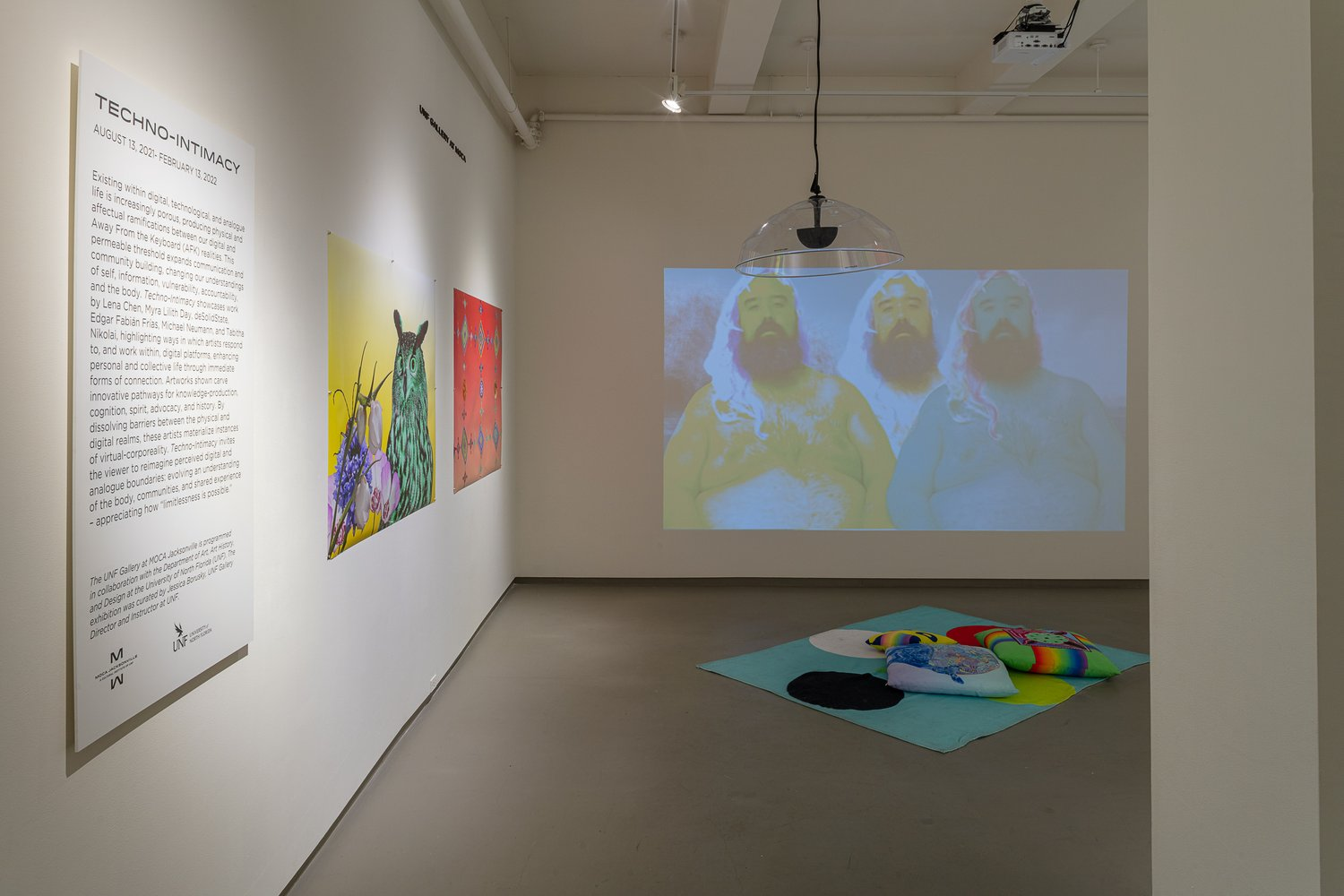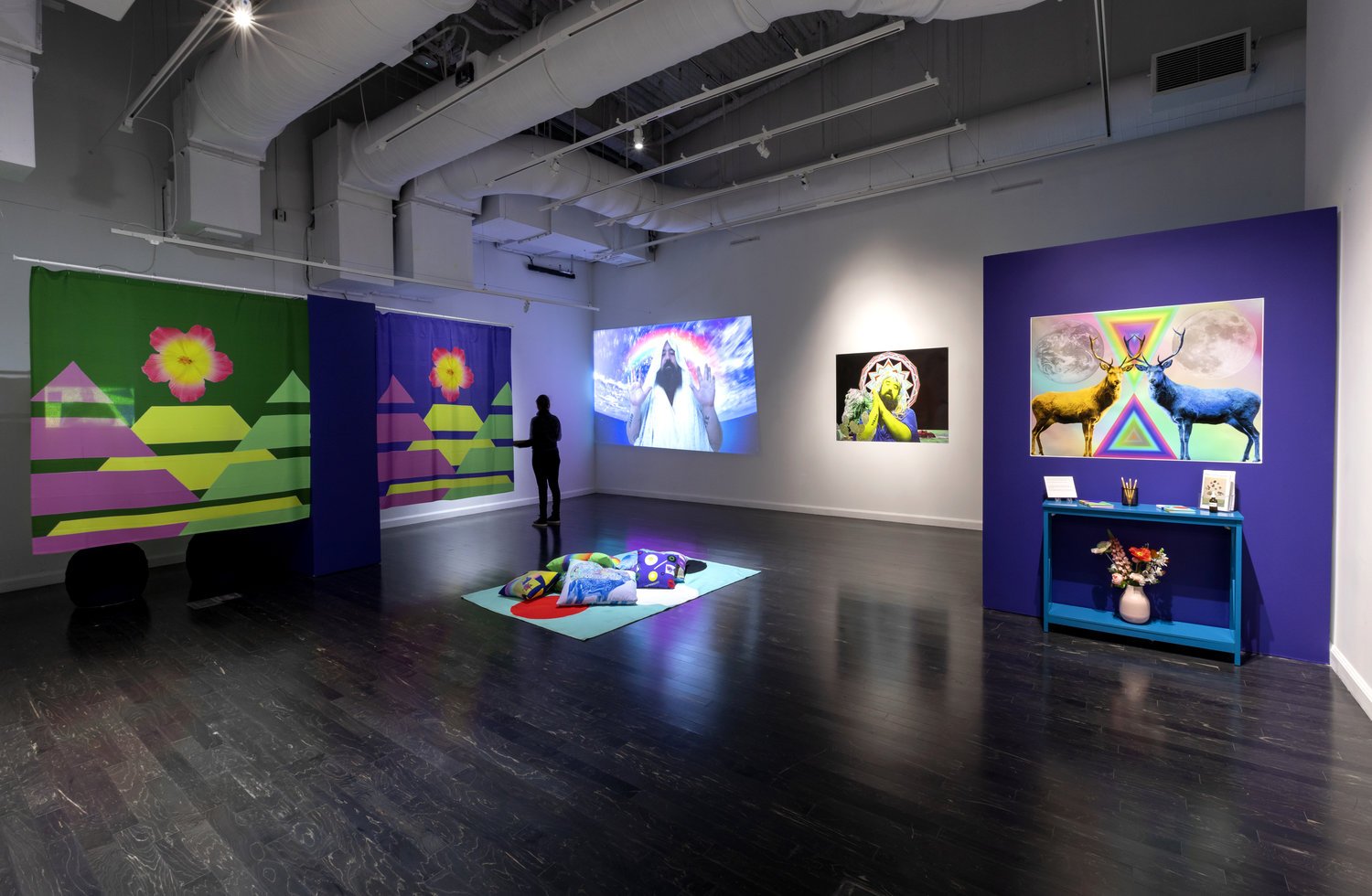An Uplifting Conversation with Edgar Fabián Frías
Photo Credit: Melissa Lukenbaugh Taken in 2020.
Edgar Fabián Frías is a nonbinary, queer, indigenous (Wixárika), Latinx, and Brown, multidisciplinary artist, curator, educator, and psychotherapist. They received dual BA degrees in Psychology and Studio Art from the University of California, Riverside. In 2013, they received an MA in Clinical Mental Health Counseling at Portland State University in Portland, Oregon, with an emphasis on Interpersonal Neurobiology and Somatic Psychotherapy. Frías is also a 2022 candidate for an MFA in Art Practice at the University of California, Berkeley. They are also a recipient of the 2021 Center for New Media Summer Research Fellowship, the Sayavong Award, and the LGBTQ+ Fellowship Cluster Award at UC Berkeley, the 2021 San Francisco Foundation Cadogan Award, the 2019 and 2020 Tulsa Artist Fellowship, a 2019-2020 Public Research Fellowship through the Oklahoma Center for Humanities, and a 2017-2018 Artist in Residence Grant through the City of Los Angeles’ Department of Cultural Affairs. Their work has been exhibited internationally, including the Vincent Price Art Museum, Oregon Contemporary, MOCA Jacksonville, Performance is Alive, the Golden Dome School, Project Space Festival Juárez, Angels Gate Cultural Center (AGCC), and ArtBo, among others. Their work has appeared in Cosmopolitan, Bustle, Mashable, Slate, CVLT Nation, Hyperallergic, and other publications. They have been involved in Crypto Art since 2020, tokenizing single and limited editions of their artwork on the blockchain. Their digital editions can currently be found on Foundation, MakersPlace, Hic Et Nunc, and Rarible. I had the honor and pleasure of asking Edgar about what are some challenges they have had to face in the art world, Blockchain and Crypto Art, and what are issues facing the communities they represent that history and the media have overlooked, and so much more.
UZOMAH: As a practicing psychotherapist, what are art's impacts on those with mental illness, particularly when going through a psychosis?
EDGAR: Art is often an oracular process and one that provides a space for people to self-reflect, pause, and be with what’s present and with what’s salient in the space. Art is a beacon of hope and can provide people with mental illness a space to dream, imagine, and create the futures and realities they are wanting to have. My experience in mental health has taught me that creativity often interweaves with psychosis, mania, and other conditions we see affect our communities. Being able to validate and mirror back the expansiveness and chaos of our consciousness through art can be healing and can show people that their experiences are both unique to themselves and also a part of the collective’s experiences. Art opens up spaces where communication can happen beyond language and beyond traditional forms of communicating. This can be crucial for individuals going through mental health crises or having difficulty communicating their needs and visions through language.
Ancestral Offering., 2021. A part of the group exhibition Monolith at Southern Exposure in San Francisco, CA. Curated by Ricki Dwyer. documentation by Southern Exposure and Minoosh Zomorodinia.
U: What advice would you give to new artists who want to get involved in Blockchain and Crypto Art?
E: Get on Twitter and treat the Crypto Artspace like you would any other artistic space. Know that by entering into the Crypto Artspace you are empowering yourself to be an artist whose art can be collected and traded and that you, yourself, are also stepping in to become a collector and supporter of artists as well. Join some discord groups, find other folks like you, uplift their art, ask for help when you need it, and know that there are tons of resources out there! I highly suggest you follow Sarah Zucker and Matt Kane, two crypto art OG’s who are incredibly generous with their knowledge and support and who are also making big moves in the space.
Perpetual Flowering at MOCA Jacksonville. Documentation is by MOCA Jacksonville. Curated by Jessica Borusky.
U: Your art will display till February of next year at MOCA Jacksonville for their exhibit, "Techno-Intimacy." How did you create art pieces to show different ways to interact and be seen today beyond social media platforms but within technology?
E: The artwork I am showing there, Perpetual Flowering, was originally exhibited as a solo exhibition at the Vincent Price Art Museum in 2019. This project seeks to create a space of reflection, contemplation, and intergenerational learning. I have created digitally printed pillows, shower curtains, and a rug to help people feel at home and connect with the video projection in the space. The video projection is a ceremonial song of the Wixárika that I have re-interpreted using electronic music and colorful, queer, psychedelic visuals. The original installation also included bottles of flower essences that people could consume to support them in connecting with the work, but, due to COVID, we decided to omit this element from this iteration of the work.
Nuestrxs Antepasadxs Nos Hablan Directamente, 2019. Billboard exhibited as a part of Add Space in Tulsa, OK. Curated by Richard Zimmerman. Documentation by Julie Clark.
U: How can art bring more authentic representation to those part of the LGBTQIA community and part of the indigenous community?
E: In art, we are given space to represent ourselves fully and self-ordain as the people we are wanting to be or even become. Art is one of the few spaces left within capitalism where we can transcend binary lines of thinking, conceptual regimentations, and transcend seemingly oppositional ontologies. Art is also a place where we can imagine possibilities and fill in so many gaps that exist in our understanding of each other and our histories (both as LGBTQIA + Indigenous people). Art is also a space of energetic, relational, and spiritual transmission. For me, art helps us connect with our ancestors and feel into spaces that are much grander and expansive than ourselves. Being able to connect with our past and to feel into our sacred inheritances as both LGBTQIA and/or Indigenous people can also help us know how to show up in the world and how to recognize each other when we see ourselves. Art helps us be mirrors for each other. Reflecting light and magic, illuminating paths towards one another.
Blown Sky High, 2021. A part of the Murphy Cadogan Awards Exhibition at SOMArts in San Francisco, CA. Curated by Kevin B. Chen. Documentation by Chani Bockwinkel
U: What are some challenges you have had to face in the art world?
E: I haven’t followed a traditional trajectory and have often taken detours and gone in directions that may not seem logical or connected to the art world’s idea of “success.” In addition to that, we know that the art world has certain markers of success that are tied to race, gender, and class that are often used to gate-keep and withhold resources and success from certain people. I’ve seen how much harder I’ve had to work to reach the level of acclaim that I’ve attained and understand that a lot of that has to do with the historical legacies of racism, homophobia, transphobia, and misogyny that exist within the art world compounded also by my refusal to fit neatly within certain boxes.
Perpetual Flowering, 2019. Solo exhibition at Vincent Price Art Museum in Los Angeles, CA. Curated by Pilar Tompkins-Rivas. Documentation by Monica Orozco.
U: What are you currently reading?
E: I am currently reading Mel Y. Chen’s Animacies: Biopolitics, Racial Mattering, and Queer Affect and Arlene Dávila's Latinx Art: Artists, Markets, and Politics. Both of which I highly recommend!
U: What are issues facing the communities you represent that history and the media have overlooked?
E: I feel like both queer and trans communities as well as BIPOC communities can often feel negated, unseen, and misrepresented by mainstream media and historical narratives. Often times “history” as we are learning it in school or within mainstream culture is tied to white supremacist and imperialist objectives and understandings of the world. There is much need for a diversification of the narratives that shape our understanding of the complex interrelatedness between cultures and communities across the planet and the role of white supremacy and colonization in the creation of gender norms, class structures, and other oppressive and hierarchical forms of power, control, and exploitation. In addition to this, queer and trans people are often seen as not existing in the past, yet our legacies and cultures are vast and we have existed across the planet in all human (and non-human) communities. Similarly, Indigenous people and our cultures are often forced to exist in the past and are not imagined as being a part of the present or as also grappling with urbanization, technology, and late-stage capitalism. We are still here, our culture is still very much alive, and not only will we exist in the future, we are actively creating it.
Nierika: Santuario Somático, 2020. Solo exhibition at Oregon Contemporary in Portland, OR. Curated by Justin Hoover. Documentation by Mario Gallucci and Oregon Contemporary.
U: What makes creating art a healing experience?
E: Art is a space where we can be reflective, process our emotions, and imagine other possibilities. I have often also used art as a place where I can transmute pain, fear, sadness, or other emotions that may be affecting me. In my art practice, I can work with these emotions to produce something that feels empowering and caring. I am able to tap into a part of myself that is a visionary and can see outside of and beyond the limitations or apprehensions of the moment. Art is oracular and collaborative. Through art, we are also able to tap into other realms and commune with ancestors and guides. Art helps us ground these etheric energies into embodied and material experiences through our medium(s) of choice.
U: What are the most damaging effects of colonialism that impact you and the indigenous community?
E: This is such a huge question. The most damaging effects have been the genocide, displacement, and emotional, relational, cultural, and historical dislocation and theft that have resulted from the effects of colonialism and continue to persist today. I, myself, did not grow up around my own Indigenous culture and it wasn’t until my 30s that my father finally shared with me about our Indigenous ancestry. It’s for this reason that I am so excited to share about my people’s culture through my artwork and to imagine and create ways for our culture to exist in the present and in the future. Indigenous Futurism as a movement has been profoundly healing and transformative for me.
U: What would you say to your younger self?
E: I would directly say that you are loved and that you belong to a web of creatives, visionaries, witches, and freaks who have existed for longer than you could even imagine at this point. Your desires and passions are beacons of light and are guiding you towards a life that is beyond your wildest dreams. Never give up. Forge spaces for yourself and others. Be kind towards yourself. Be kind towards others.
U: What is next for you in both your artistic practice and in therapy?
E: I am going to be receiving my MFA in Art Practice from UC Berkeley in May of 2022. I will be creating a new installation piece that touches upon conspiracy theories, cults, algorithms, the new age & wellness industrial complexes, Indigenous healing practices, and modalities, and the hope I find in Indigenous Futurism and queer, trans, and gender-expansive cultures. I am hoping to start practicing as a therapist in private practice again in the near future. I am licensed in the state of California and have been inactive for the last few years as I have been pursuing my MFA degree and art practice full time.
For more information about Edgar’s artwork please visit their site. Also give them a follow on Twitter, Instagram and like them on Facebook.






